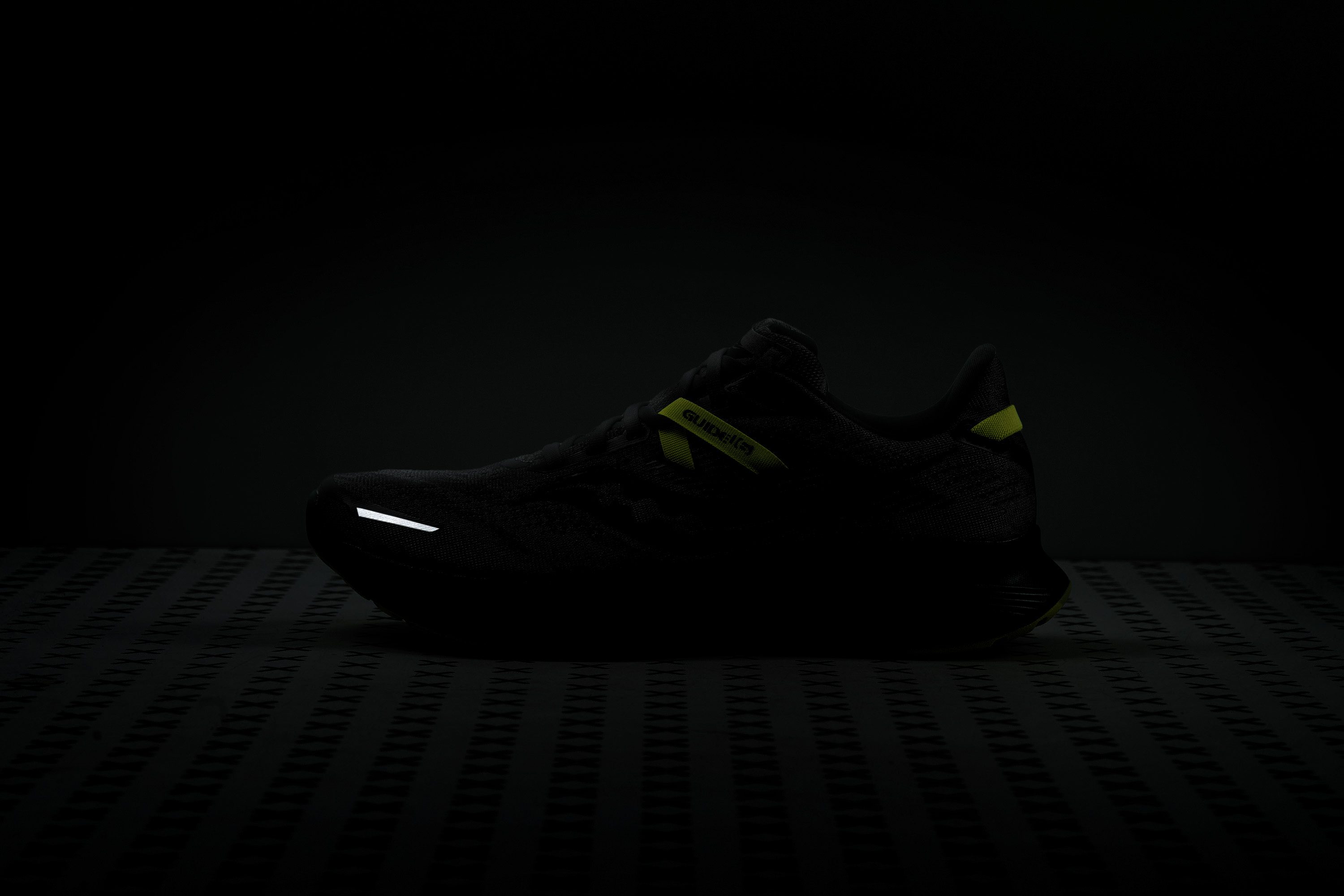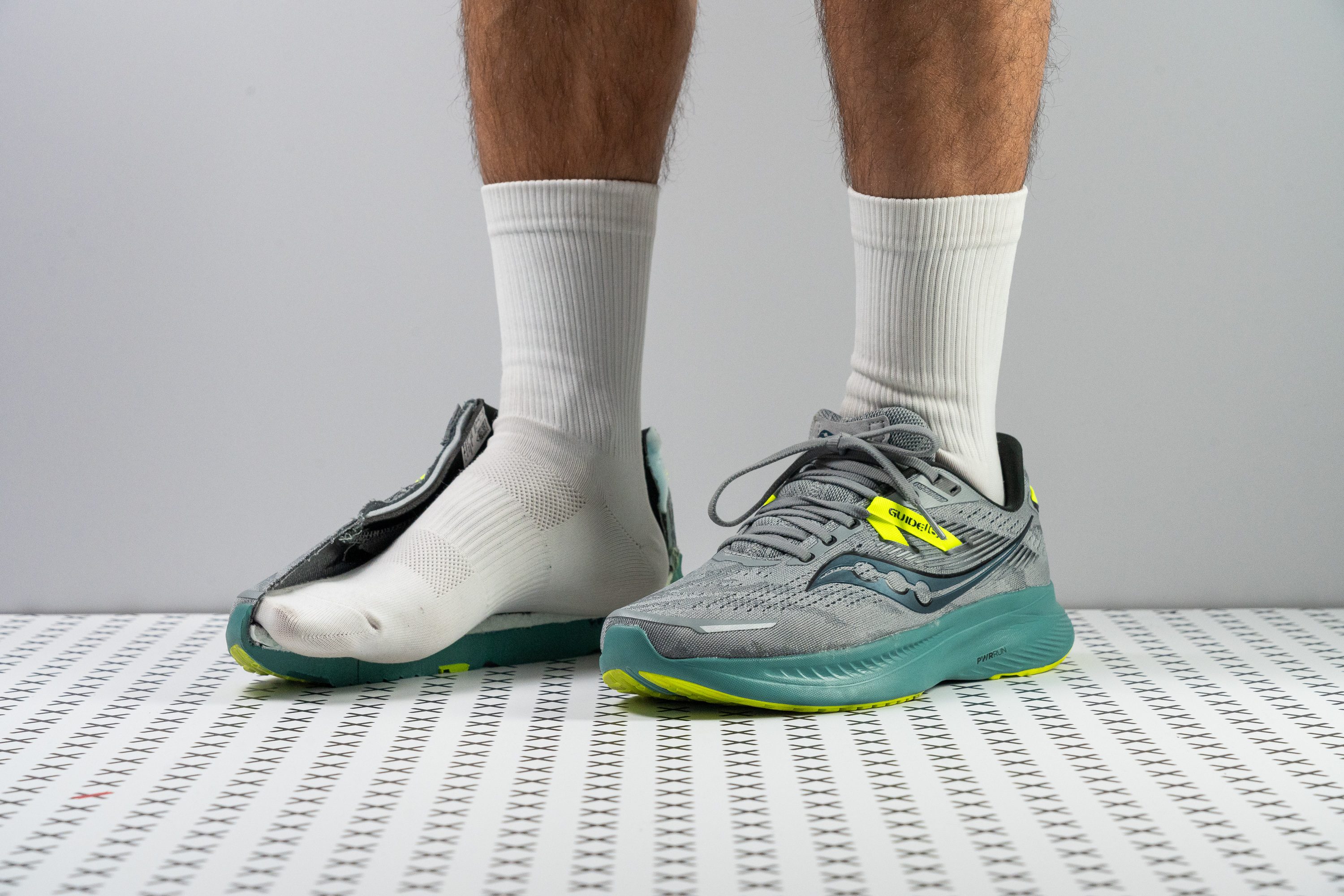Our verdict
- Top pick in best running shoes for plantar fasciitis (2023)
- Top pick in best stability running shoes (2023)
Pros
- Softer, more comfortable upper
- Breathable
- Excellent lockdown
- Good guidance without being too intrusive
- Protective and fairly responsive
- Good grip
- Natural-feeling ride
- Roomy toe box
- Lightweight
- Best for daily miles and as a walking shoe
Cons
- Uncomfortable for going sockless
- Firm cushioning
- Does not like to go fast
- Durability is so-so
Audience verdict
Comparison
The most similar running shoes compared
+ + Add a shoe | |||||
|---|---|---|---|---|---|
| Audience score | 88 Great! | 80 Good! | 89 Great! | 89 Great! | |
| Price | $140 | $140 | $140 | $160 | |
| Pace | Daily running | Daily running | Daily running | Daily runningTempo | |
| Arch support | Stability | Stability | Stability | Stability | |
| Weight lab Weight brand | 9.7 oz / 275g 9.5 oz / 269g | 9.8 oz / 278g 9.6 oz / 272g | 9.8 oz / 279g 9.8 oz / 278g | 9.4 oz / 266g 8.9 oz / 252g | |
| Drop lab Drop brand | 7.8 mm 8.0 mm | 8.3 mm 6.0 mm | 10.0 mm 10.0 mm | 8.5 mm 8.0 mm | |
| Strike pattern | Mid/forefoot | HeelMid/forefoot | HeelMid/forefoot | HeelMid/forefoot | |
| Size | True to size | True to size | True to size | Slightly small | |
| Midsole softness | Balanced | Balanced | Balanced | Soft | |
| Difference in midsole softness in cold | Normal | Small | Small | Small | |
| Toebox durability | - | Good | Decent | - | |
| Heel padding durability | Bad | Decent | Bad | - | |
| Outsole durability | - | Good | Decent | - | |
| Breathability | Moderate | Breathable | Moderate | Breathable | |
| Width / fit | Medium | Medium | Medium | Narrow | |
| Toebox width | Narrow | Medium | Wide | - | |
| Stiffness | Stiff | Moderate | Flexible | Moderate | |
| Torsional rigidity | Flexible | Stiff | Moderate | Moderate | |
| Heel counter stiffness | Stiff | Flexible | Stiff | Stiff | |
| Rocker | ✓ | ✗ | ✗ | ✓ | |
| Heel lab Heel brand | 32.6 mm 35.0 mm | 36.0 mm 35.0 mm | 33.1 mm 36.0 mm | 33.9 mm 36.5 mm | |
| Forefoot lab Forefoot brand | 24.8 mm 27.0 mm | 27.7 mm 29.0 mm | 23.1 mm 26.0 mm | 25.4 mm 28.5 mm | |
| Widths available | NormalWide | NormalWideX-Wide | Normal | NormalWide | |
| Orthotic friendly | ✓ | ✓ | ✓ | ✓ | |
| Season | All seasons | SummerAll seasons | All seasons | SummerAll seasons | |
| Removable insole | ✓ | ✓ | ✓ | ✓ | |
| Ranking | #278 Top 43% | #300 Bottom 18% | #110 Top 30% | #84 Top 23% | |
| Popularity | #395 Bottom 39% | #57 Top 16% | #258 Bottom 29% | #122 Top 34% |
Size and fit
Size
Saucony Guide 16 fits true to size (49 votes).
Who should buy the Guide 16
Get this Saucony Guide 16 if you:
- need a road runner that provides extra support and guidance for flat feet and overpronation
- are looking for a lightweight daily trainer
- want a rotation partner for your speed-ready Saucony Tempus
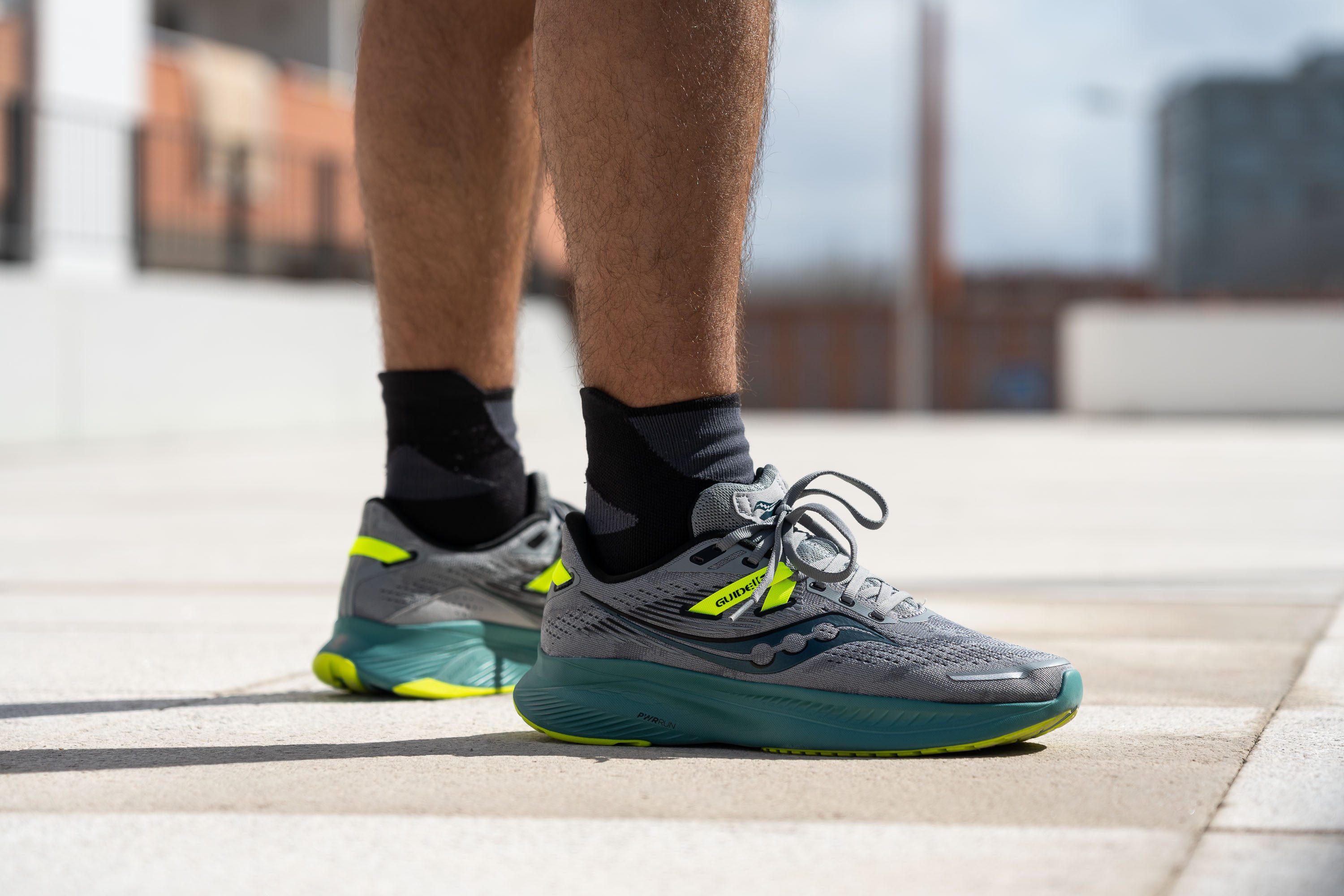
Who should not buy it
If you prefer a cushier feeling underfoot from your stability runners, we suggest checking out the ASICS Gel Kayano 29 or the Hoka Gaviota 4. For one that can handle speedwork, try the ASICS GT 2000 11.
Your feet are in for a treat
Like its neutral counterpart, the Ride 16, the 16th iteration of the Guide also received minimal—yet quite impactful—alterations this time around.
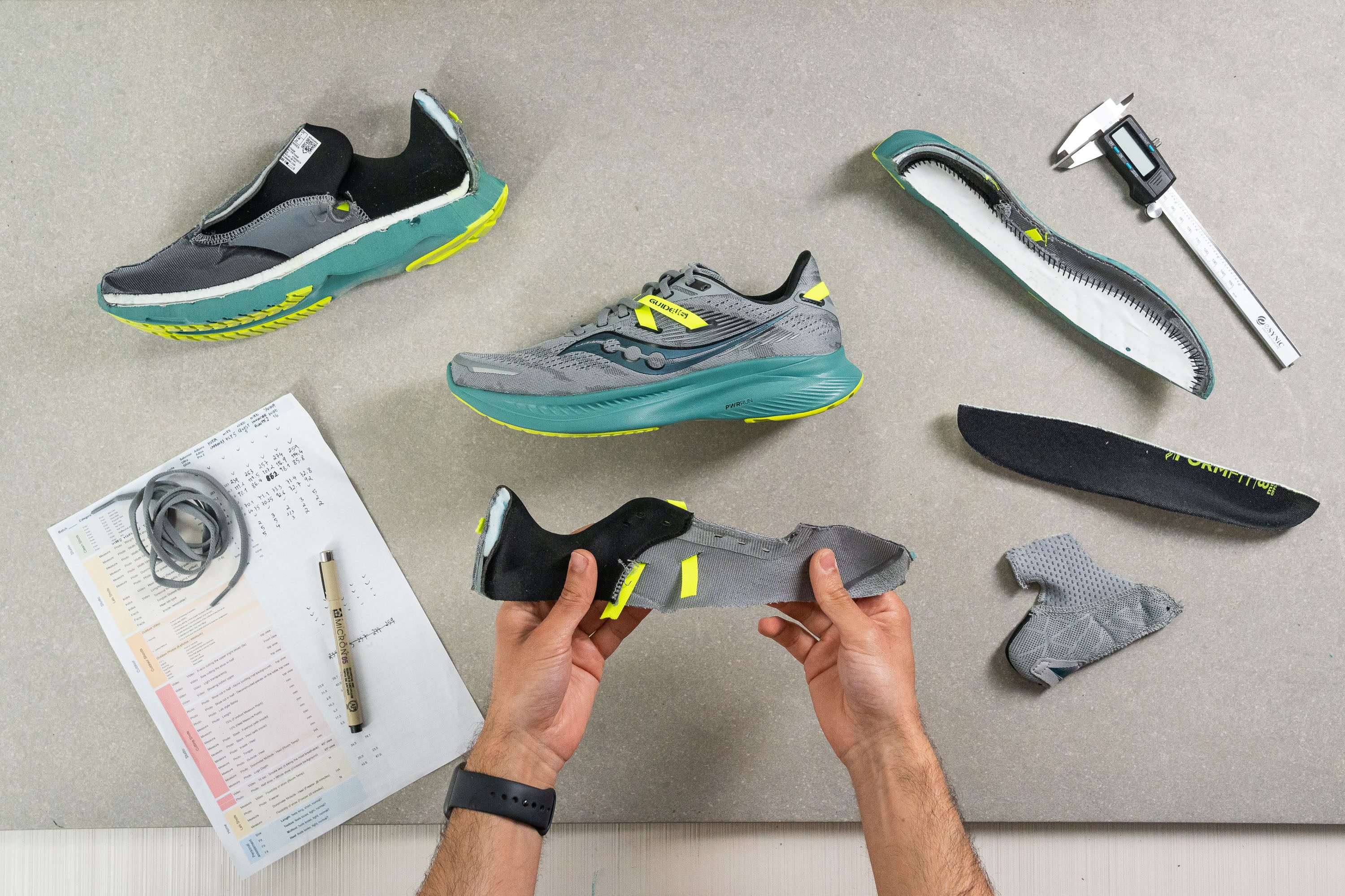
We noticed that most of the changes occurred up top, with the Guide 15’s dense and thin upper being replaced by a softer, more pliable mesh material. Together with the gusseted tongue and ghillie lacing system, it does an excellent job of keeping the foot dialed in without having to lace lock.

It seems as though Saucony compromised breathability a bit in the 16th Guide. In our lab, we measured the breathability with the smoke test. On a scale of 1 to 5, the shoe received 3, which means that it is averagely breathable.
For this test, we use a smoke-pumping machine and cover up the shoe mouth entirely so that the smoke is only able to escape through the upper.
We carried out a second test on the upper. By putting it against light, we could see that the light can still pass through the fabric, meaning that it's still breathable enough.
The photos we took with our microscope show the texture of the mesh upper and the holes that let the moisture out.
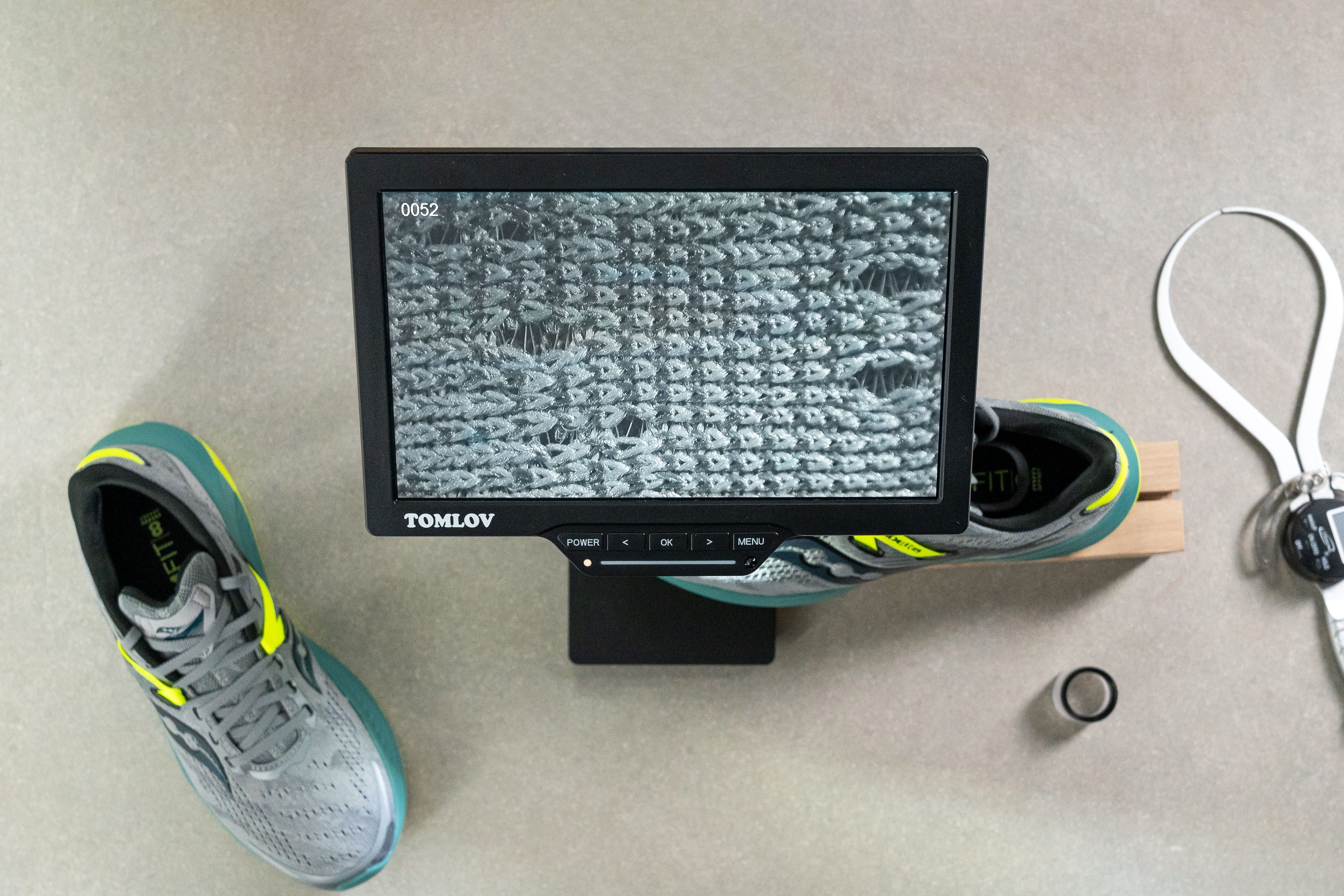
Firmness with a purpose
We found the Guide 16’s PWRRUN foam to be one of the softest among stability shoes. But make no mistake—stability shoes are bound to be on the firm side! For comparison, the Asics Gel Kayano 29 is exactly as soft.
We tested the Guide's foam in our lab and we can confirm that it's soft. To be exact, it's 20% softer than the average road running shoe.

We also felt as though the Guide 16 offered a great amount of cushioning, shock absorption, and bounce which made it a comfortable option for longer outings.

We measured the stack height at the heel and we found that it is 32.6 mm, which is close to the average of 33.2 mm. We did the same with the forefoot and received 24.8 mm. Again, very close to the average of all running shoes we've tested (24.5 mm).
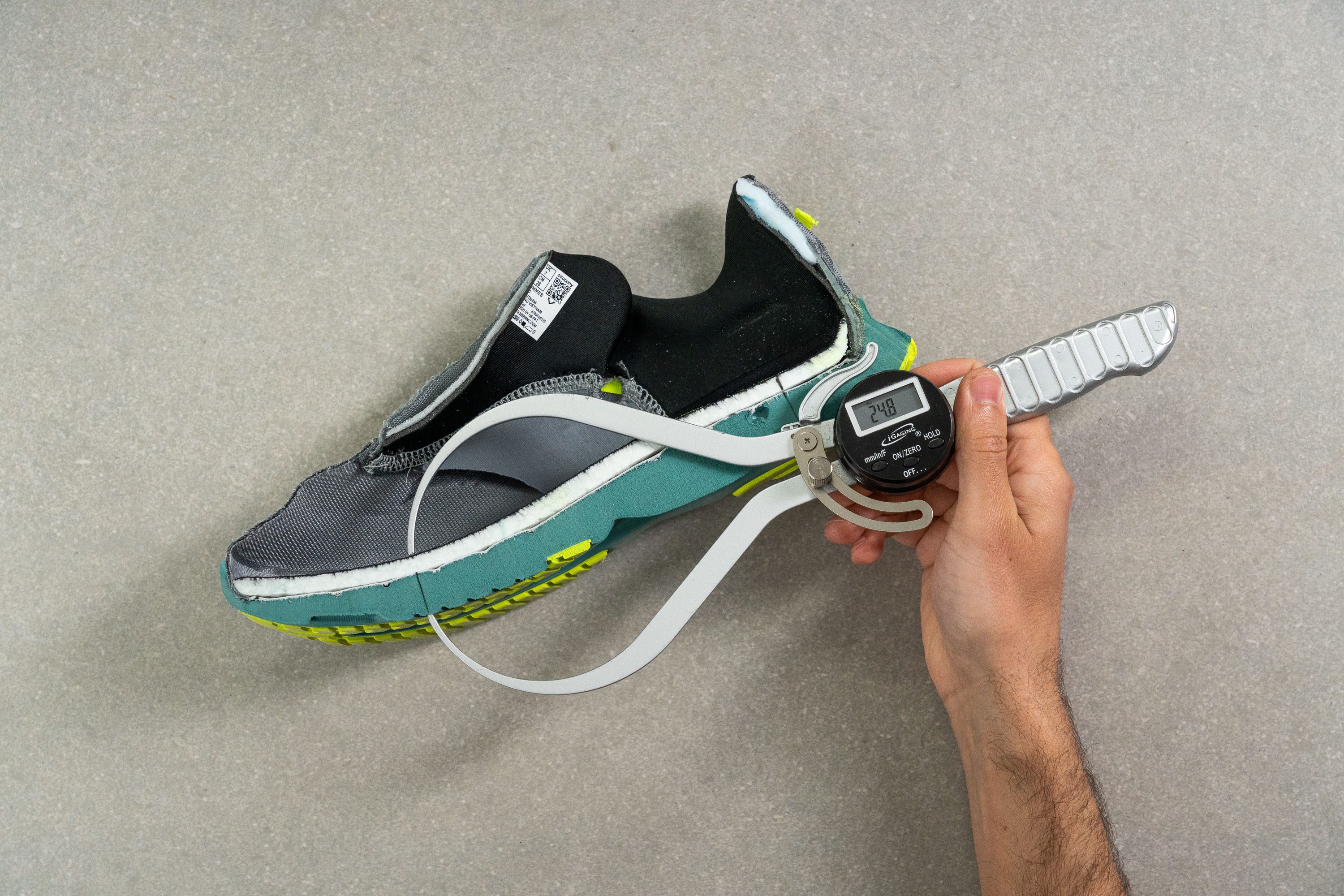
Guidance that adapts to your needs
There’s a bevy of stability components that contribute to the Guide 16’s centered ride, with the HOLLOW-TECH frame serving as the primary mechanism. This provided a subtle but supportive firmness underneath our arches that reduced overpronation and helped to propel us forward.
Additionally, the shoe’s sidewalls, sole flaring, heel lockdown, and geometry also assist in providing well-integrated stability without being too pushy.
The heel also features a slightly lateral bevel that guided our landings very well and created a more stable experience.

Being 114.4 mm at the forefoot the sole is slightly wider than average, which is 112.5 mm. On the other hand, at the heel, it's actually narrower: only 85.8 mm compared to the average of 89.4 mm.

Unlike the rest, the heel counter is extremely stiff. In our test, it received 5 out of 5 (5 being the stiffest).
Doesn’t ride like a stability shoe
Thanks to its flexible outsole and mild forefoot rocker, the Guide 16 bucks the trend of rigid stability shoes, and provides fluid mid-to-forefoot transitions and a ride that’s easy to get into a rhythm with.
Out of all the shoes we had in our lab, the Guide 16 is nearly 50% more flexible, which is indeed very uncommon for a stability shoe.
A second test confirms the first one: the shoe scored 2 out of 5 (with 5 being the stiffest) in both longitudinal and torsional flexibility.

Cold temperatures can make running shoes stiffer. After 20 minutes in the freezer, the Saucony Guide 16 became 47.7% more rigid, yet it still remained 12% more flexible than most shoes we tested.
The Guide 16 doesn't have a rockered geometry. The video above shows the difference with a very pronounced geometry, which rolls much better and smoother.
Not your run-of-the-mill sock liner
Also among the updates to the v16 is the new PWRRUN+ insole, which we found to be more plush and comfortable than its predecessor. This upgraded insole does a great job of buffering any firmness that may come from the midsole.
Our lab data confirms this experience. Using a pair of calipers, we measured the insole thickness at 6.3 mm. It is 2 mm thicker than the average of all the insoles we measured.
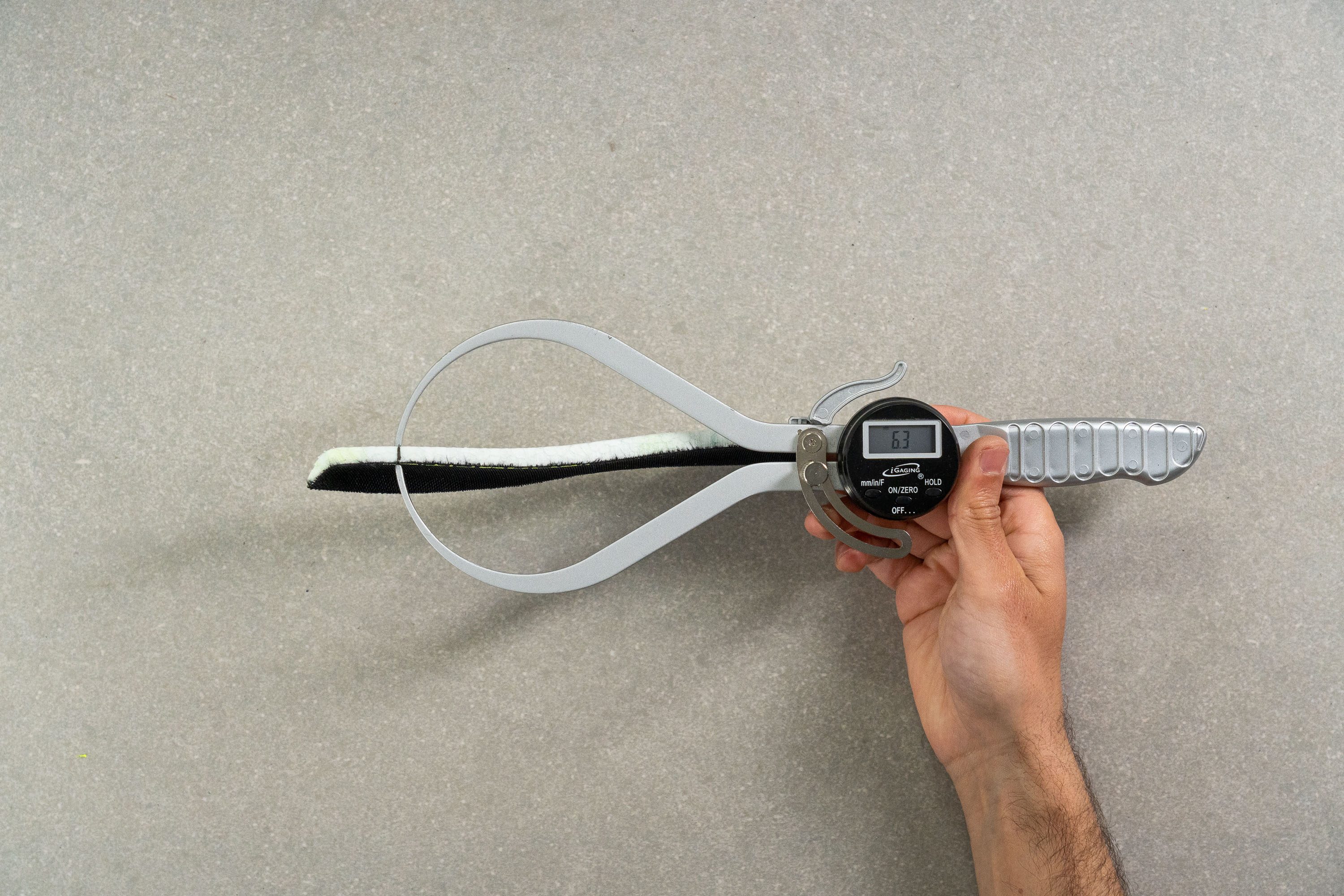
Want to go fast? This ain’t it
The Guide 16 is a daily trainer that’s definitely more of a mileage eater. The shoe is at its best when running relaxed paces but also does fine for longer efforts.
While it can also pick up the pace decently, we wouldn’t use this for a proper tempo run.
On the bright side, because of its comfortable insole and traditional-feeling geometry, it can also double well as a stable walking shoe.
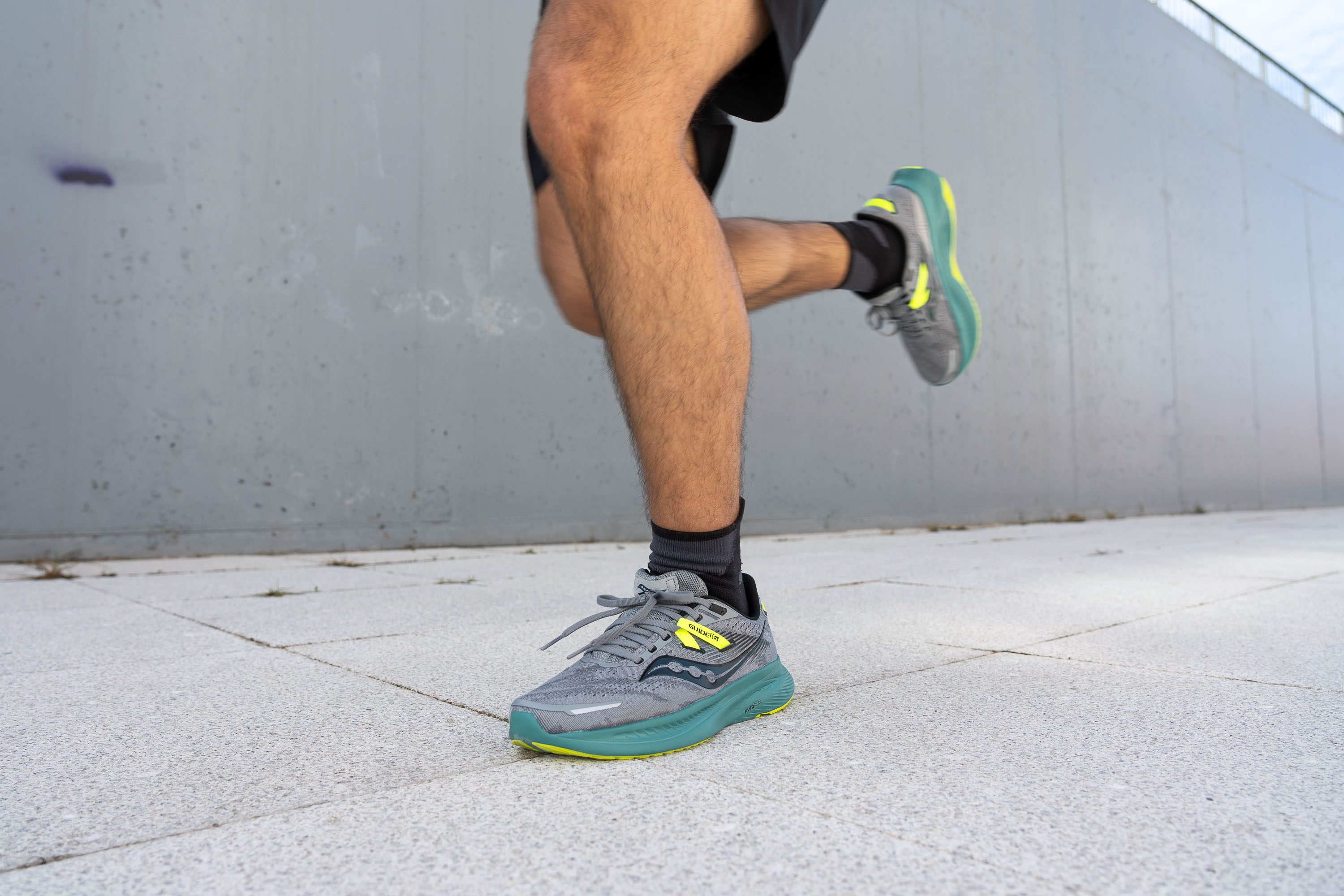
More splay room than before
We felt as though the Guide 16 had a more spacious toebox than the v15, with the new pliable upper allowing it to open up even wider.
This was confirmed by our measurements as this new version is nearly 5 mm larger in the widest part of the toebox than the predecessor.
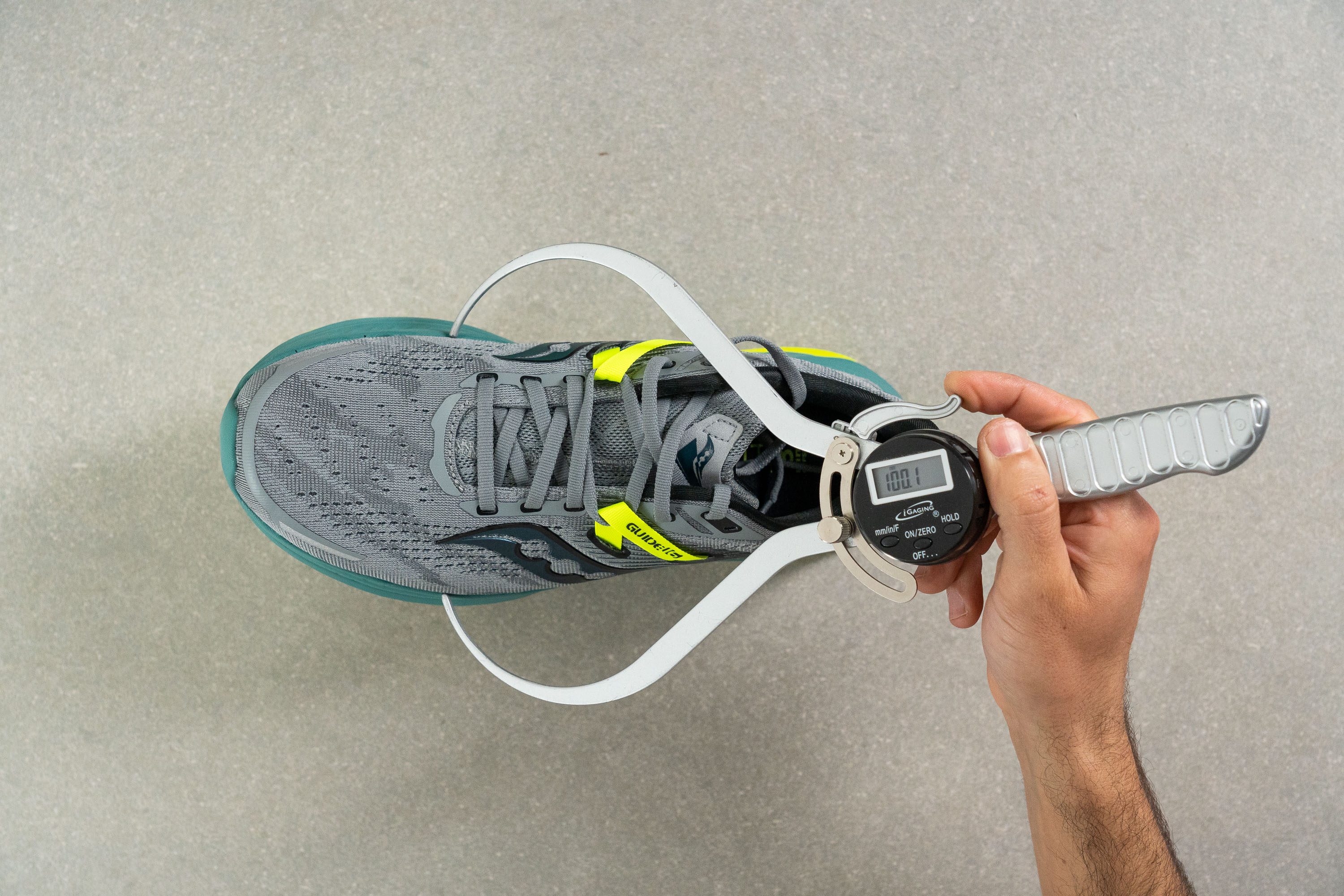
Unlike the width at the forefoot, at the heel the upper is now a little bit narrower than before. It's nearly 2 mm narrower than the previous version.

Smooth but doesn’t slip
The Guide 16 sports two types of rubber on its outsole: a softer blown rubber on the forefoot which aids in providing swift transitions, and a firmer carbon rubber from the midfoot back for some added stability.
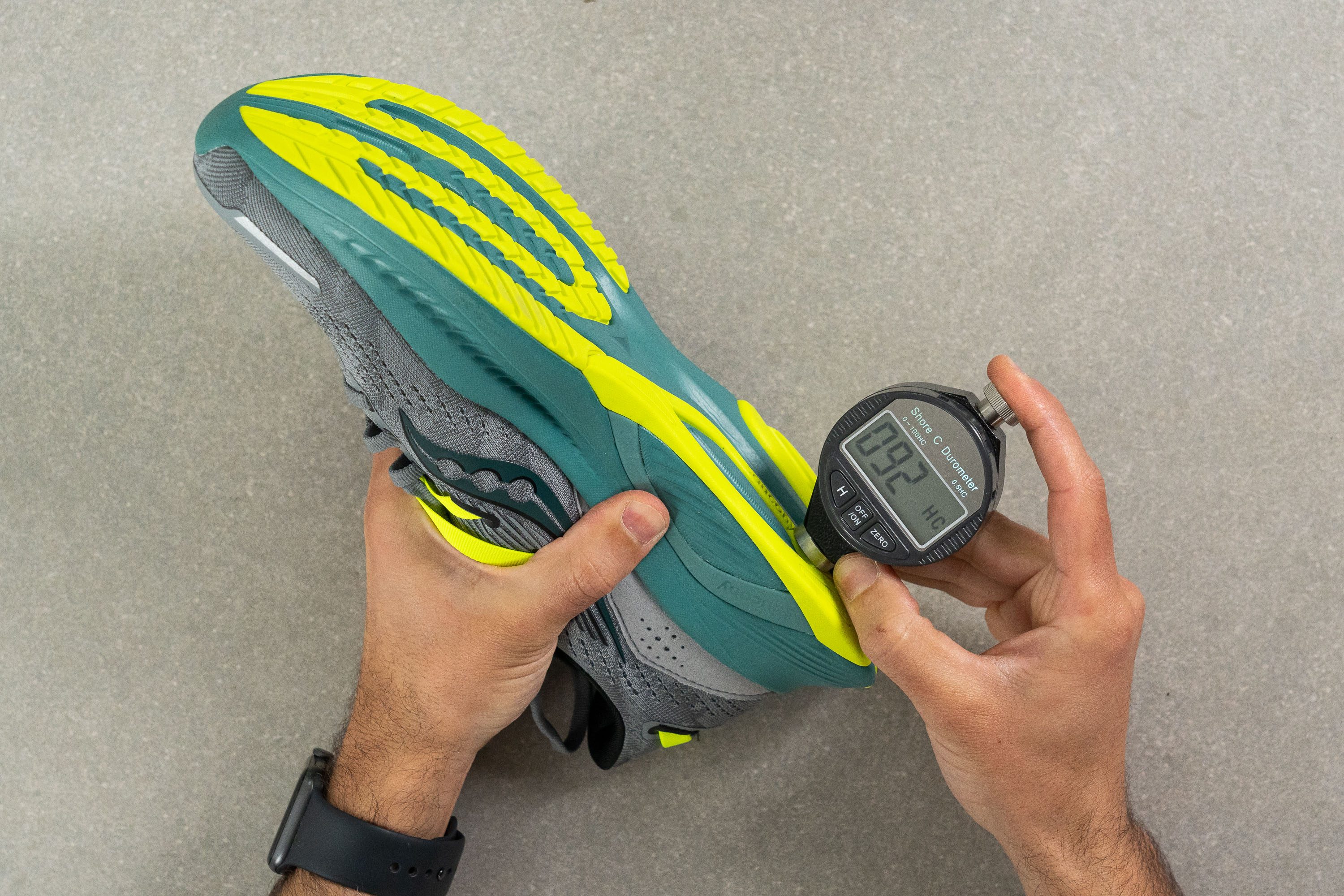
We measured the outsole rubber with a durometer and found that it was particularly hard. At 92.0 HC, it's 14% firmer than most running shoes we have tested.
We definitely felt that this rubber offered great traction even on groomed trails, wet smooth surfaces, and slick pavements.

As for the outsole's thickness, we measured it to be 3.9 mm, slightly thicker than the average of 3.5 mm. That will add some extra miles into the Guide 16's lifespan.
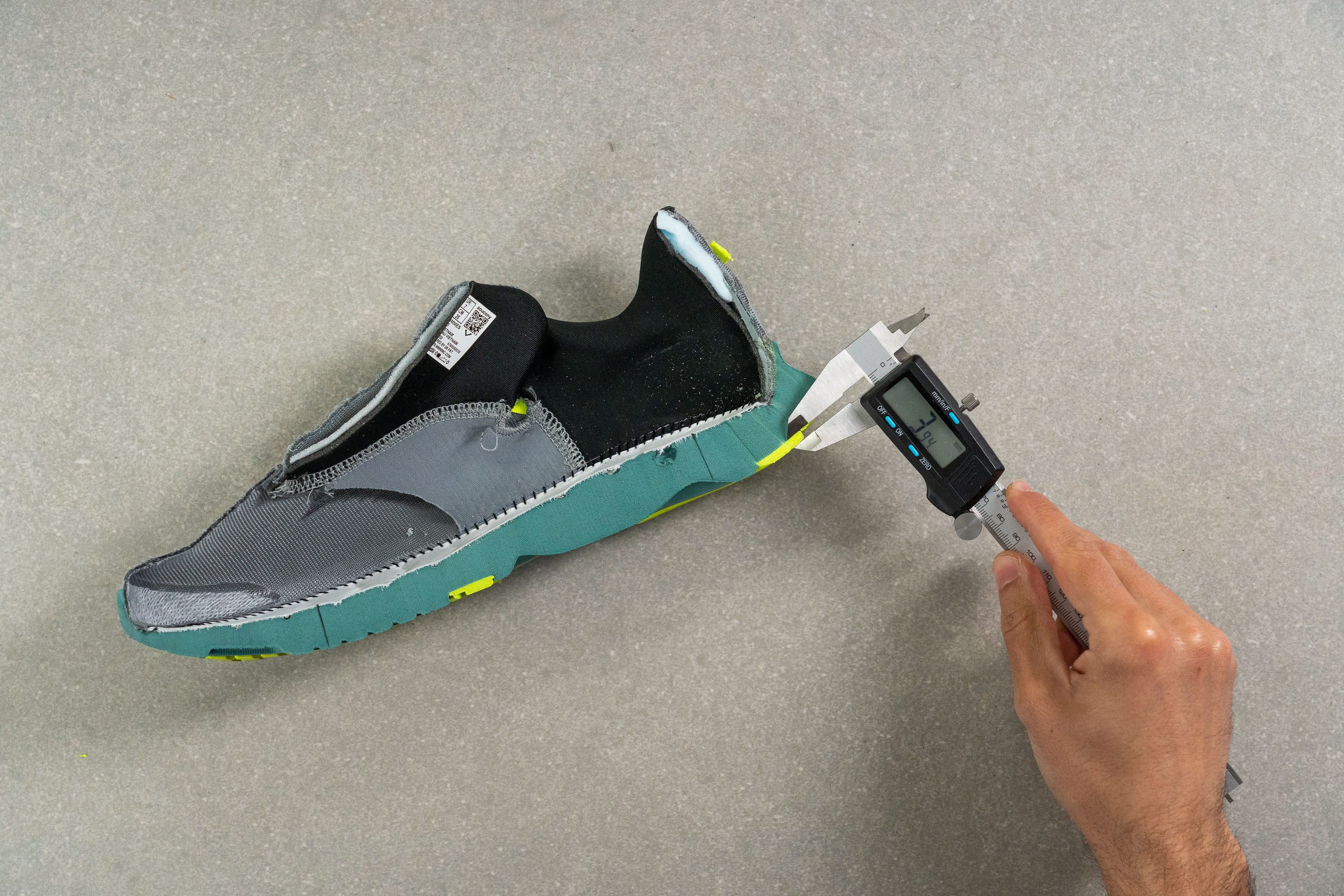
Lean, mean stability machine
We were pleasantly surprised that the Guide 16 only weighed 9.7 oz (275g) for a men’s US 9. It’s significantly lighter than most stability shoes (10.3 oz/291g on average).
It's best to take a light with you
While its presence is better than nothing, the small reflective detail doesn't do much to make a runner visible at night.
